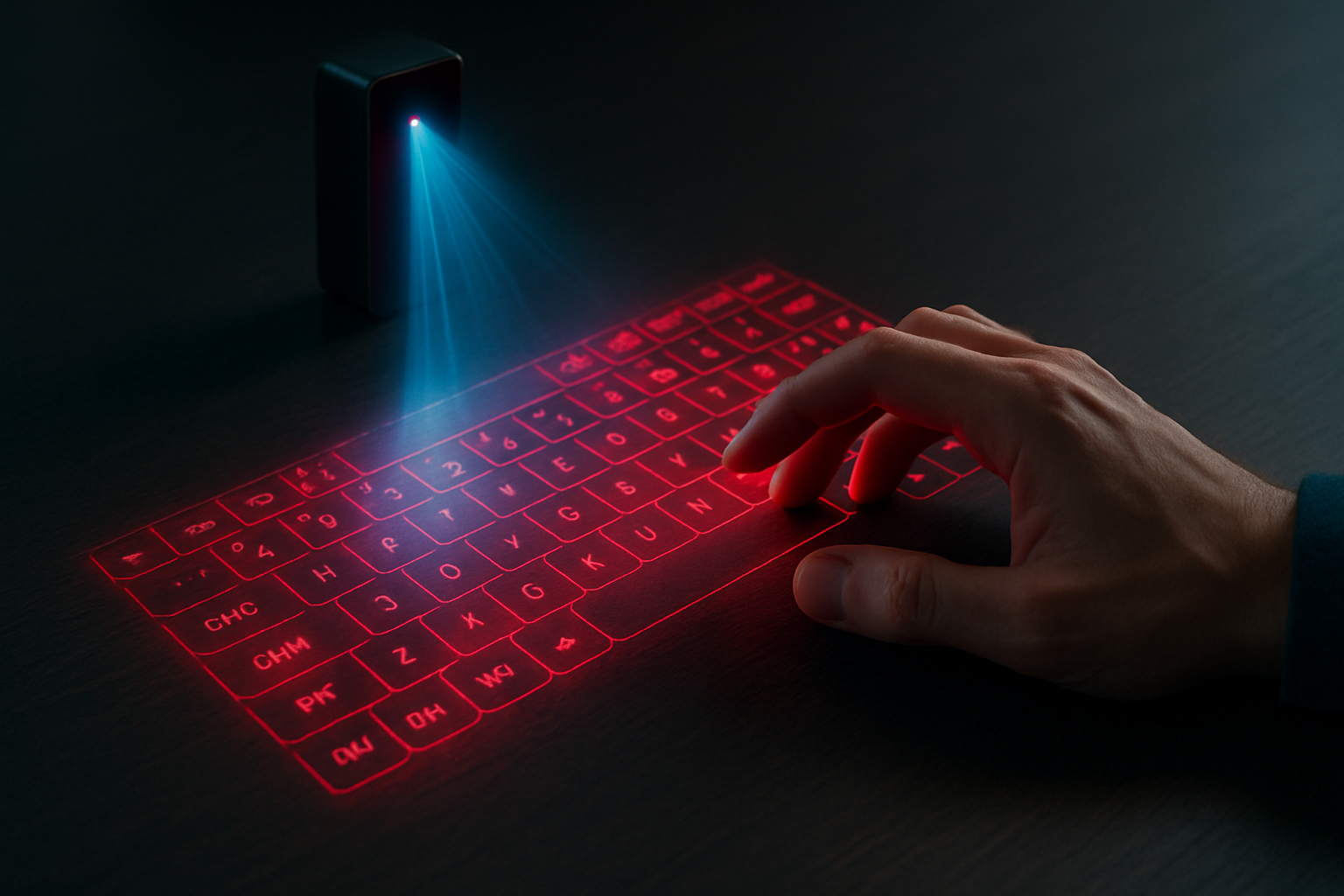Holographic Keyboards: Typing in Thin Air
In a world where technology continues to push boundaries, holographic keyboards are emerging as a fascinating frontier in human-computer interaction. These futuristic input devices project a virtual keyboard onto any flat surface, allowing users to type without physical keys. As we delve into this cutting-edge technology, we'll explore its potential to revolutionize how we interact with our devices and the challenges it faces in becoming a mainstream input method.

How Holographic Keyboards Work
At the heart of holographic keyboard technology lies a clever combination of optics and sensors. A small projector casts an image of a keyboard onto a flat surface, while infrared or laser sensors create an invisible plane just above the projected image. When a user’s fingers break this plane, the system interprets the movement as a keystroke. Advanced algorithms help improve accuracy by predicting intended key presses based on typing patterns and context.
Current Market Offerings
While holographic keyboards are still relatively niche, several companies have brought products to market. Celluon’s Epic and Serafim’s Keybo are among the more well-known options, offering portable projectors that can turn any flat surface into a typing area. These devices typically connect to smartphones, tablets, or laptops via Bluetooth and can project both QWERTY keyboards and piano keys for music applications. Prices for consumer-grade holographic keyboards generally range from $100 to $300, positioning them as premium accessories for tech enthusiasts.
Advantages of Going Holographic
The appeal of holographic keyboards lies in their portability and flexibility. Unlike traditional keyboards, they take up virtually no physical space when not in use, making them ideal for mobile professionals or travelers. They can also be easily sanitized, an increasingly important feature in shared work environments. Additionally, the ability to customize keyboard layouts and sizes offers a level of adaptability that physical keyboards can’t match.
Challenges and Limitations
Despite their futuristic allure, holographic keyboards face several hurdles in achieving widespread adoption. The lack of tactile feedback can be disorienting for touch typists accustomed to physical keys. Accuracy remains a concern, especially in less-than-ideal lighting conditions or on uneven surfaces. Battery life is another consideration, as the projection and sensing technologies can be power-hungry. These challenges have kept holographic keyboards from replacing traditional input methods in most settings.
The Future of Holographic Input
As technology improves, we can expect to see more sophisticated holographic input devices. Research is ongoing into providing haptic feedback for virtual keys, potentially addressing the lack of tactile response. Advancements in AI and machine learning could lead to more accurate keystroke detection and personalized typing experiences. Some experts envision holographic keyboards as stepping stones to even more advanced interfaces, such as gesture-based controls or direct brain-computer interfaces.
Integration with Augmented Reality
One of the most exciting prospects for holographic keyboards is their potential integration with augmented reality (AR) systems. As AR headsets become more prevalent, holographic keyboards could serve as intuitive input methods within virtual workspaces. Imagine typing on a desk in your home office while your AR glasses display a much larger, customized workspace around you. This convergence of technologies could redefine our concept of the personal computer and workspace.
Environmental Impact and Sustainability
An often-overlooked aspect of holographic keyboards is their potential environmental benefit. By eliminating the need for physical keys and reducing the amount of plastic and electronic components required, these devices could contribute to a reduction in e-waste. However, the energy consumption of projection technology and the materials used in sensors and optics must be considered in any comprehensive environmental assessment.
A Glimpse into Tomorrow’s Typing
Holographic keyboards represent a tantalizing glimpse into the future of human-computer interaction. While they may not be poised to replace traditional keyboards just yet, their development signals a shift towards more flexible, portable, and customizable input methods. As the technology matures and overcomes current limitations, we may find ourselves increasingly typing on beams of light rather than physical keys. The journey of holographic keyboards from science fiction to reality is a testament to the ever-evolving nature of technology and our quest to make computing more seamless and intuitive.





